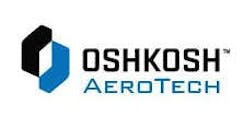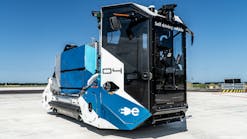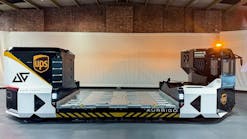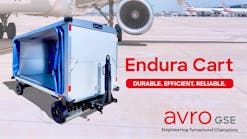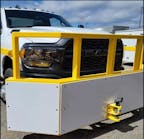In the aviation industry, what are some common strategies to avoid GSE congestion?
An airport’s apron, ramp, taxiways, and airside region are necessarily going to be busy places. Along with huge aircraft landing, taking off, being towed, and taxiing, there are whole ground support equipment (GSE) vehicle fleets sharing that space to service them. That includes refueling equipment, aircraft tugs and pushbacks, tractors pulling strings of baggage carts, deicing GSE in the winter, and a world of service carts. On top of this massive collection of aircraft and GSE, there’s also ground crew navigating the area. All of the moving pieces and people are required to work quickly, with expensive equipment and passenger business on the line.
With all of that contributing to a hectic airside environment, it’s very easy for congestion to gum up the works. Unfortunately, that can cost a whole lot of money. It can happen quickly too. For instance, aircraft tugs left in the wrong place can create bottlenecks that can ripple out into backups that cause costly delays. And if GSE such as aircraft tugs collide with an aircraft or, even worse, a member of a ground crew, delays are inevitable on top of the far greater issue of injury or worse. The key to avoiding GSE congestion on the airside is communication. Not only do lines of communication need to be open between the operators of those aircraft tugs and crew management, but they also need to be open between the ground crews and other ground crews, flight crews, airport management, and everyone else involved in the aerodrome’s operation.
Managing those aircraft tugs and baggage carts and the rest of the GSE with current telematics technology can prove a huge boon, as can organizing efficient GSE pooling. To ensure any collisions or accidents are mitigated as much as possible, the key is to invest in high-quality GSE and safety features.
Some great examples of high-performance GSE to invest in are aircraft tugs, tow tractors, and more from a reputable, established, and respected GSE provider like AERO Specialties. Outfitting those aircraft tugs, pushbacks, and tow tractors with safety solutions like AERO Specialties’ SiPsHitch Linear Force Monitoring System is likewise a terrific step to help mitigate issues that could cost time, money, and add to airside congestion.
To learn more about AERO Specialties, visit https://www.aerospecialties.com/product-category/tow-tugs-pushback-tractors/
